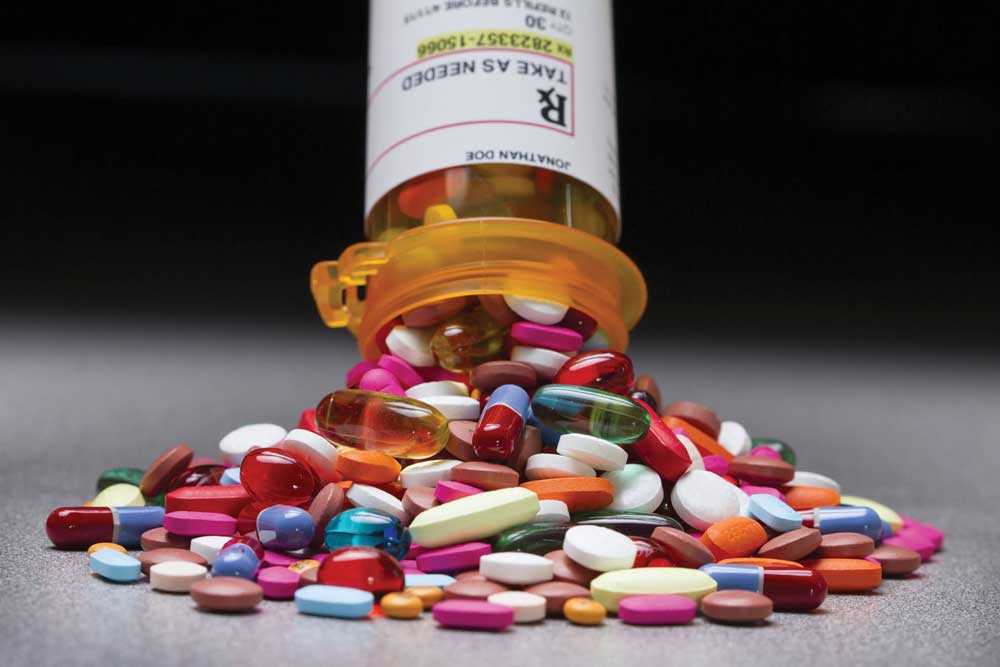
By Audrey Fraizer
You name it, the city of Lowell, in Middlesex County, Massachusetts, has tried it in its fight against opioid use and abuse. And it’s a war where more and more battles are being won.
The overall strategy—one that garnered a grant from the U.S. Department of Justice and extensive community support—presents a major departure from punitive approaches to opioid use and abuse.
The approach is called collaborative compassion and involves developing a stronger understanding of opioid use and connecting overdose victims to treatment, according to Robin Toof, director of the two-year funded Lowell Opioid Overdose Project. (1)
The project inspired communitywide involvement backed by data gathering to lend greater insight into the nature of the opioid crisis. Among the initiatives funded through the grant is a robust database that leads to evidence-based solutions for local government to better tailor their responses, including intervention, education, prevention, and enforcement.
Jon Kelley, director of operations, communication, and IT for Trinity EMS, Inc. , a private ambulance provider with roots in Lowell, is a data person. He understands the importance of collecting and applying data to identify and solve problems. As an emergency medical technician (EMT), he recognized the devastation of opioid abuse and recognized that it doesn’t discriminate by zip code. He wanted to do something about it.
“This can happen to anyone,” he said. “It’s everywhere. People get hurt, get a prescription for opioids, and, in some, an addiction develops. As a data person, I knew the data was there. Data gives us the opportunity to do some good. We can do so much to turn the tide.”
Steps Taken
Statistics show the tide is turning, but first, a little about Lowell’s history in coming to terms with its the opioid crisis.
While information varies depending on the source, overlapping reasons for high numbers of fatal and non-fatal opioid overdoses in Lowell include demographics not unlike those of any large urban center. Lowell is the fourth most populous city in Massachusetts (111,670 according to a 2018 census estimate) and, according to a 2017 Community Needs Assessment, (2) housing and homelessness emerged at the top of the list of unmet needs in the Lowell community, with substance abuse resources identified as second, and jobs as third.
Lowell and neighboring Lawrence are reportedly regional hubs of the opioid trade, and fentanyl has featured prominently in that trade. (3)
Data is a big factor in curbing fatal and non-fatal opioid use. The Massachusetts Ambulance Trip Reporting Information System (MATRIS), originally created to collect and maintain standardized EMS patient data and information based on trip records, was enhanced statewide to accurately identify ambulance trips that are opioid-related—for example, that a trip was listed as a poisoning, that the trip included administration of naloxone, or that the patient admitted to drug use.
As mentioned, Trinity EMS is committed to data collection to better frame the issue within its expanded service area. Collection starts at the communication center. Since 2015, Joseph Breen, a Trinity EMS dispatcher and quality assurance supervisor, has reviewed every single patient care report that indicates an opioid-related call. He monitors volume to identify spikes and tracks demographics such as age and gender of the patients, time of day and day of the week, and location of fatal and non-fatal overdoses within each community.
In 2016, Trinity EMS added FirstWatch to instantly notify community leaders when a call involving an overdose comes in to the communication center. The software speeds up notifications into real-time data in a format compliant with HIPAA (the Health Insurance Portability and Accountability Act of 1996). A FirstWatch app displays the data as pinpoints on a map—the what and the where—to hasten response to the scene. The same call also triggers an email to the Lowell Community Opioid Outreach Program (CO-OP), which follows up with the individual regarding treatment options. The faster the response, the better the outcome.
“Any time we can help someone, it’s one more opportunity for that person to change [his or her] path,” Kelley said.
Data Show Progress
Data shows that programs such as CO-OP and Lowell House (an addiction recovery service) are helping to lessen the problem. From 2015 through 2018, Lowell had one of the highest numbers of opioid overdoses and fatalities in the state, with 63 deaths and 579 confirmed nonfatal overdoses in 2015, 68 deaths and 687 confirmed nonfatal cases in 2016, 53 overdose deaths in 2017, and 64 overdose deaths in 2018. (4) (Statistics are unavailable for nonfatal cases in 2017 and 2018. ) Numbers for the first quarter of 2019 show a dramatic increase of 30 percent in nonfatal overdoses. Success is a matter of reaching people before the overdose becomes fatal; fewer people are dying.
Kelley said Trinity’s approach and its continued positive results have attracted attention statewide. Everybody wants to be on the winning end of the opioid fight, although reasons may vary. In Lowell, it’s a matter of taking responsibility. “These are our people. These are our citizens,” he said. “Let’s own this. Let’s figure out how we can help.”
FirstWatch has partnered with more than 200 medical and police agencies nationwide interested in opioid abuse prevention and suppression. Agencies can contact FirstWatch to configure a controlled drug trigger based on key words (e.g. , opioid, Narcan) to identify potential overdoses at the 911 level. The data’s application is also agency-specific, such as mapping areas of particularly high overdoses—which could indicate a surge in fentanyl.
The task is much more difficult than you might expect, said Sylvia Verdugo, FirstWatch clinical solutions specialist. For example, callers might not come right out and admit an “opioid overdose” when talking to the emergency medical dispatcher. Many lack awareness of Good Samaritan laws that protect victims and those who call 911 for help from charge and prosecution. Massachusetts passed its Good Samaritan Law in 2007.
Often, it’s a matter of gathering clues. Did the caller mention physical symptoms (altered status, respiration rate)? A medical protocol software—Medical Priority Dispatch System (MPDS)—simplifies the collection through the targeted keywords picked up during the emergency dispatcher’s questioning of the caller. The scripted questions direct the emergency dispatcher to the specific chief complaint (the patient’s medical situation) to coordinate medical response.
Verdugo recommends that agencies develop standardized definitions of opioid overdose to clarify what exactly they want in a data surveillance program. She also encourages agencies to work together—share information—to develop best practices.
Why does it matter?
“FirstWatch gives you the evidence,” she said. “But what absolutely matters is the story behind a number, and the face that goes with the story. Knowing what we can do to help someone.”

Audrey Fraizer is managing editor, Journal of Emergency Dispatch, International Academies of Emergency Dispatch, Salt Lake City, Utah (audrey.fraizer@prioritydispatch.net).
Endnotes and References
1 Lowell Opioid Overdose Project. Prescription Drug Monitoring Program (PDMP) October 1, 2016–September 30, 2018 (grant period) http://www.pdmpassist.org/content/lowell-opioid-overdose-project (accessed May 21, 2019).
2 2017 Community Needs Assessment. http://www.commteam.org/wp-content/uploads/2017/06/2017-Community-Needs-Assessment.pdf (accessed June 14, 2019).
3 Vance A, Schuster L. “Opioid Addiction Is a National Crisis. And It’s Twice as Bad in Massachusetts.” Boston Indicators. https://www.bostonindicators.org/reports/report-website-pages/opioids-2018 (accessed May 31, 2019).
4 Massachusetts Department of Public Health. Number of Opioid-Related Overdose Deaths, All Intents by City/Town 2014-2018. May 2019. https://www.mass.gov/files/documents/2019/05/15/Opioid-related-Overdose-Deaths-by-City-Town-May-2019.pdf (accessed June 3, 2019).
New, Reduced Membership Dues
A new, reduced dues rate is available for CAOs/ACAOs, along with additional discounts for those in smaller communities, has been implemented. Learn more and be sure to join or renew today!
